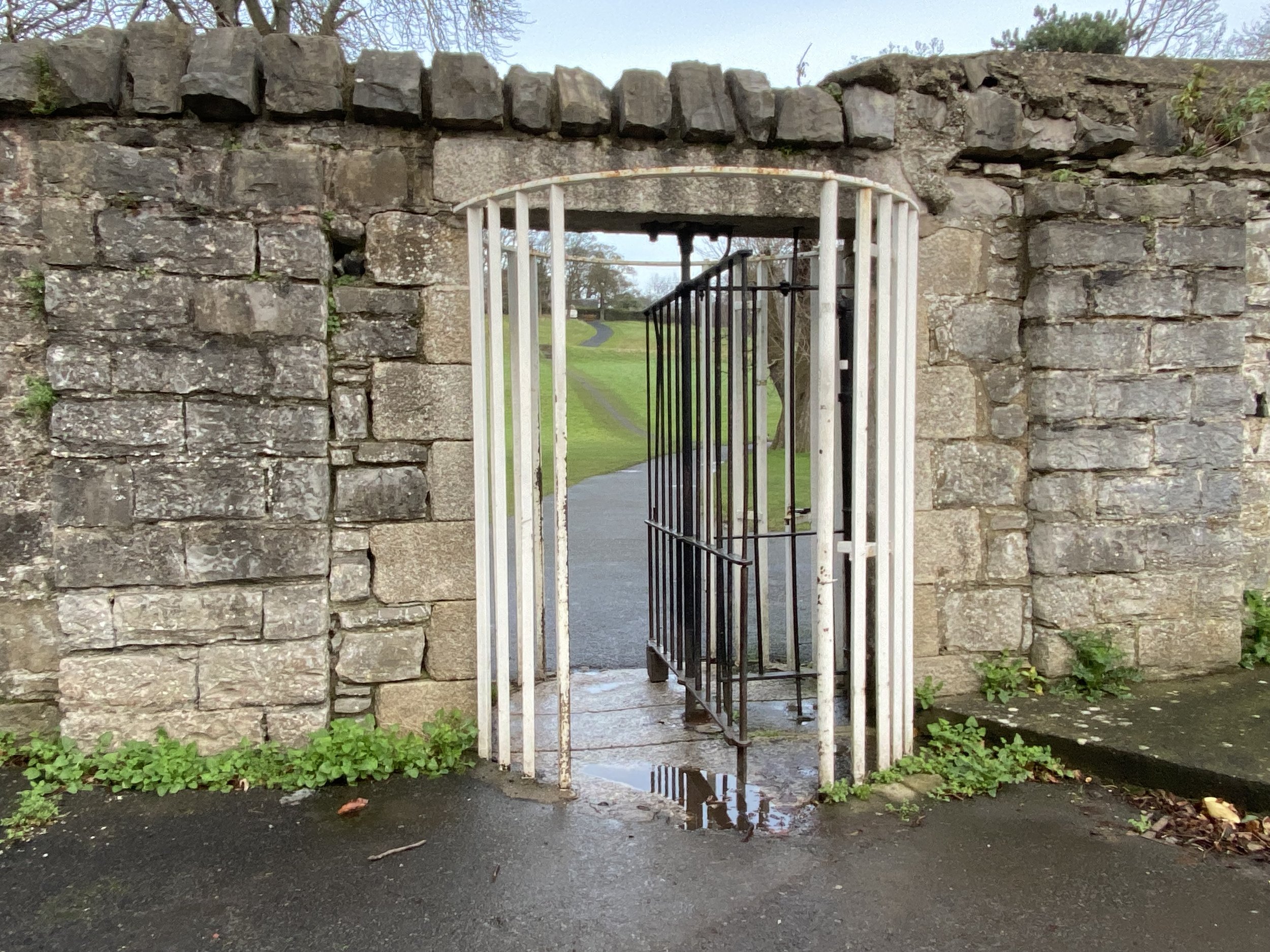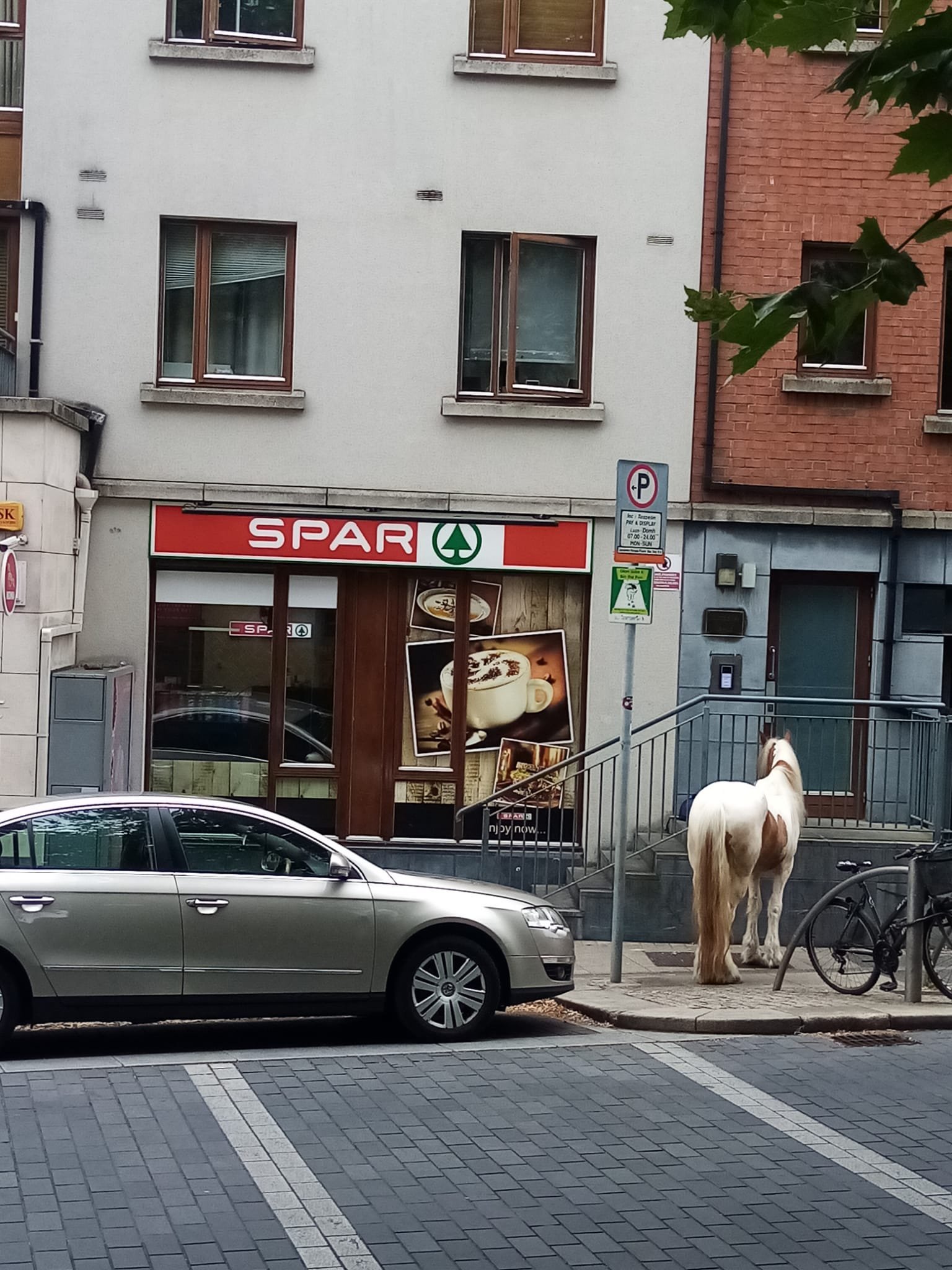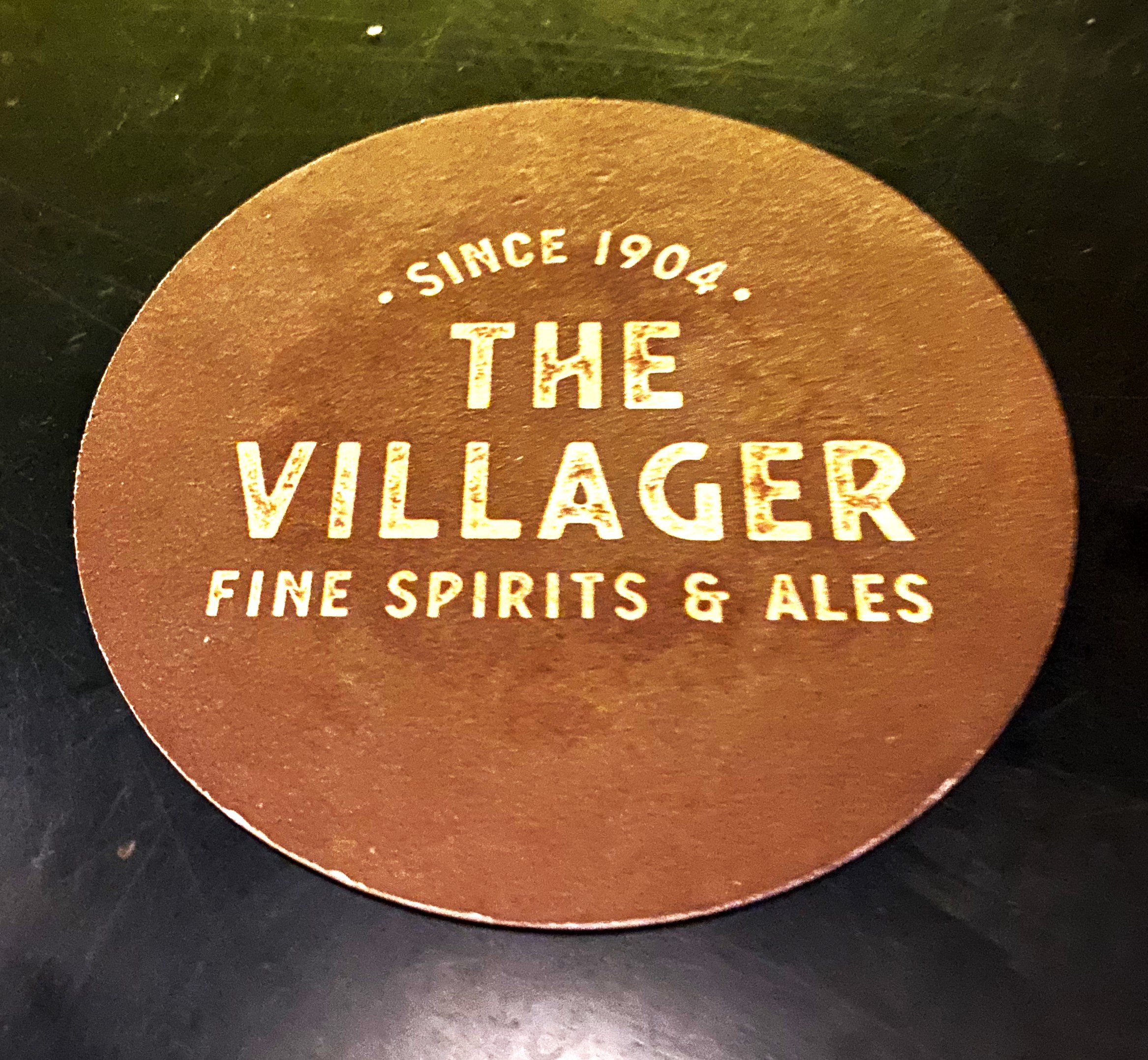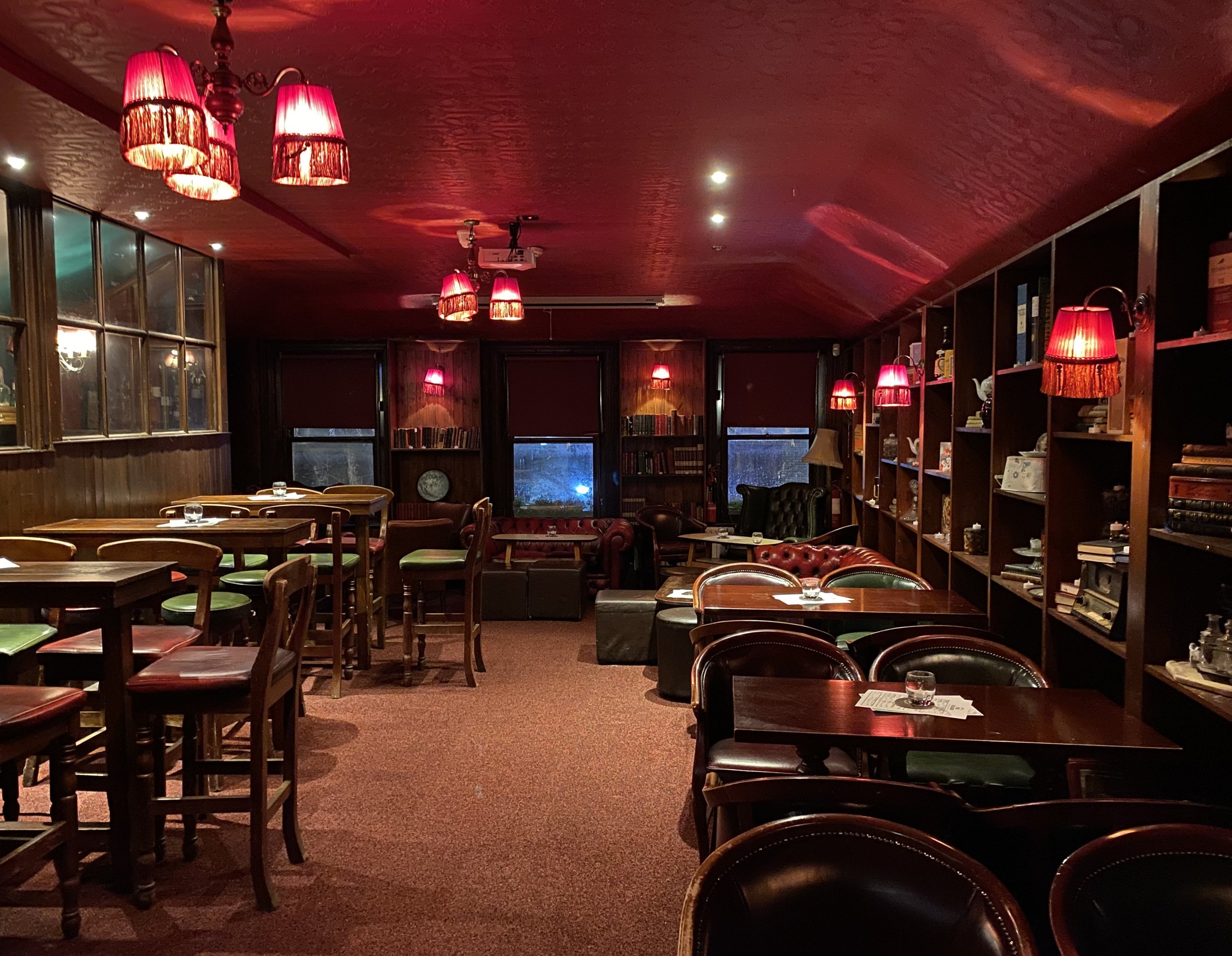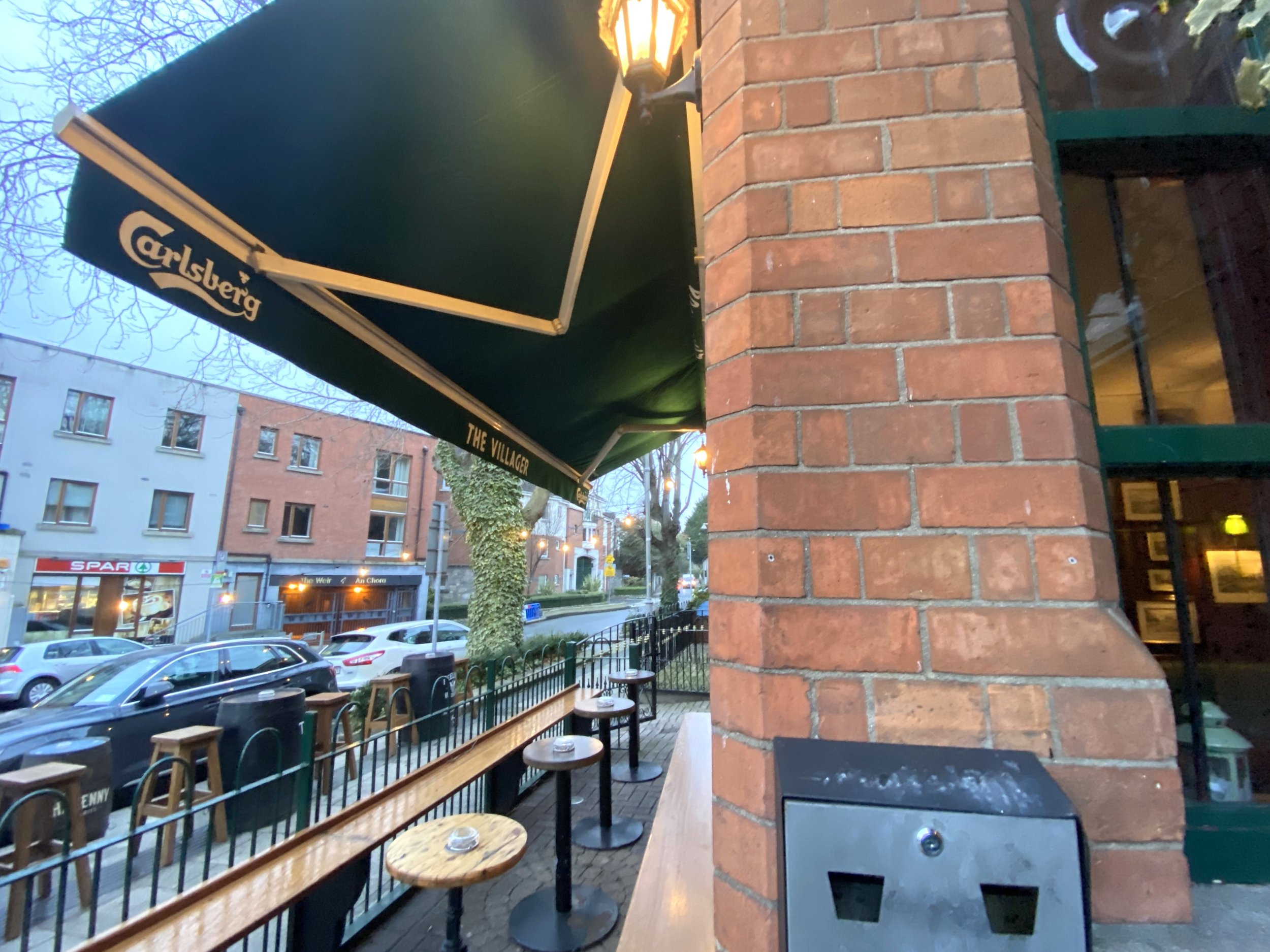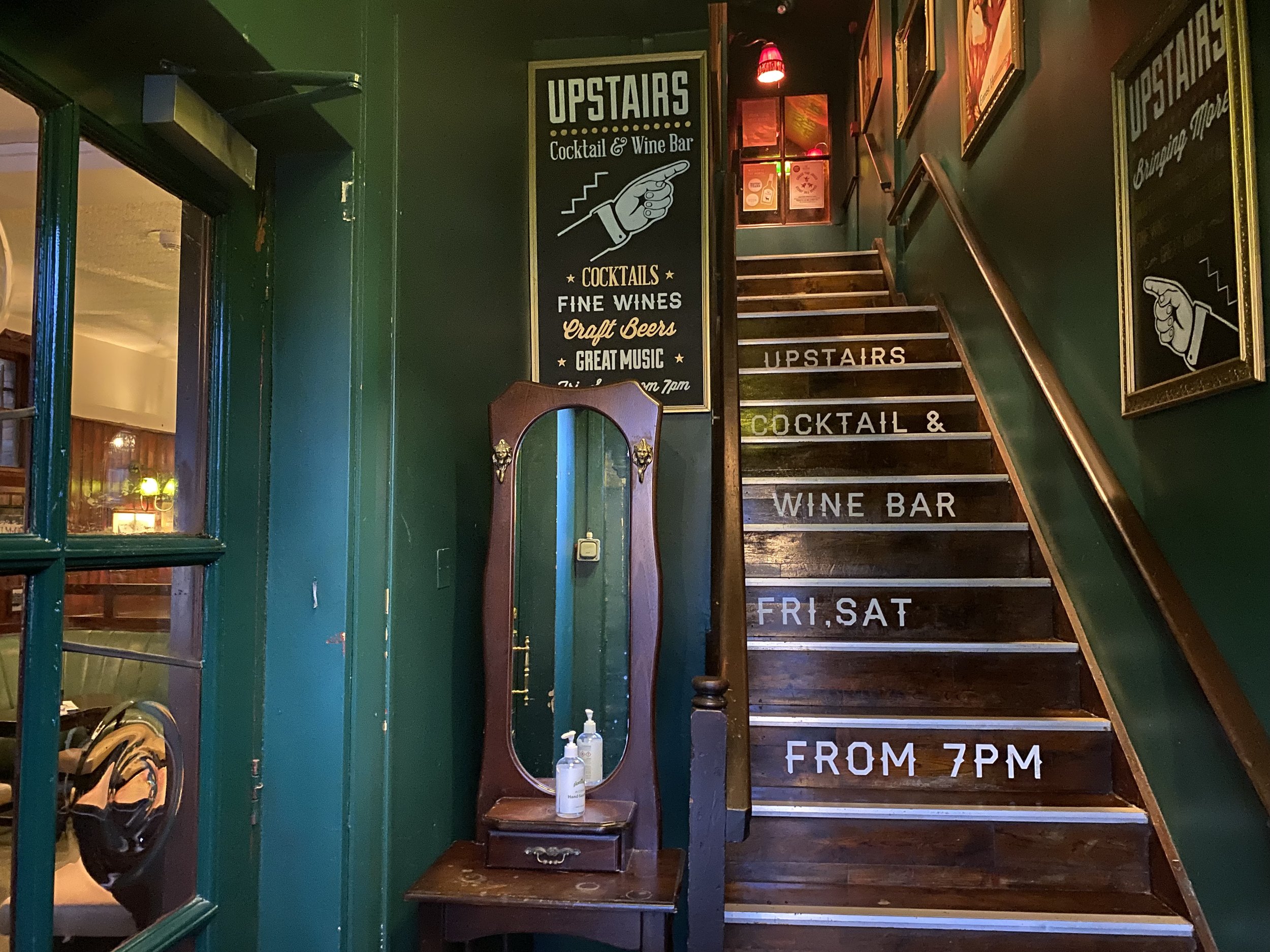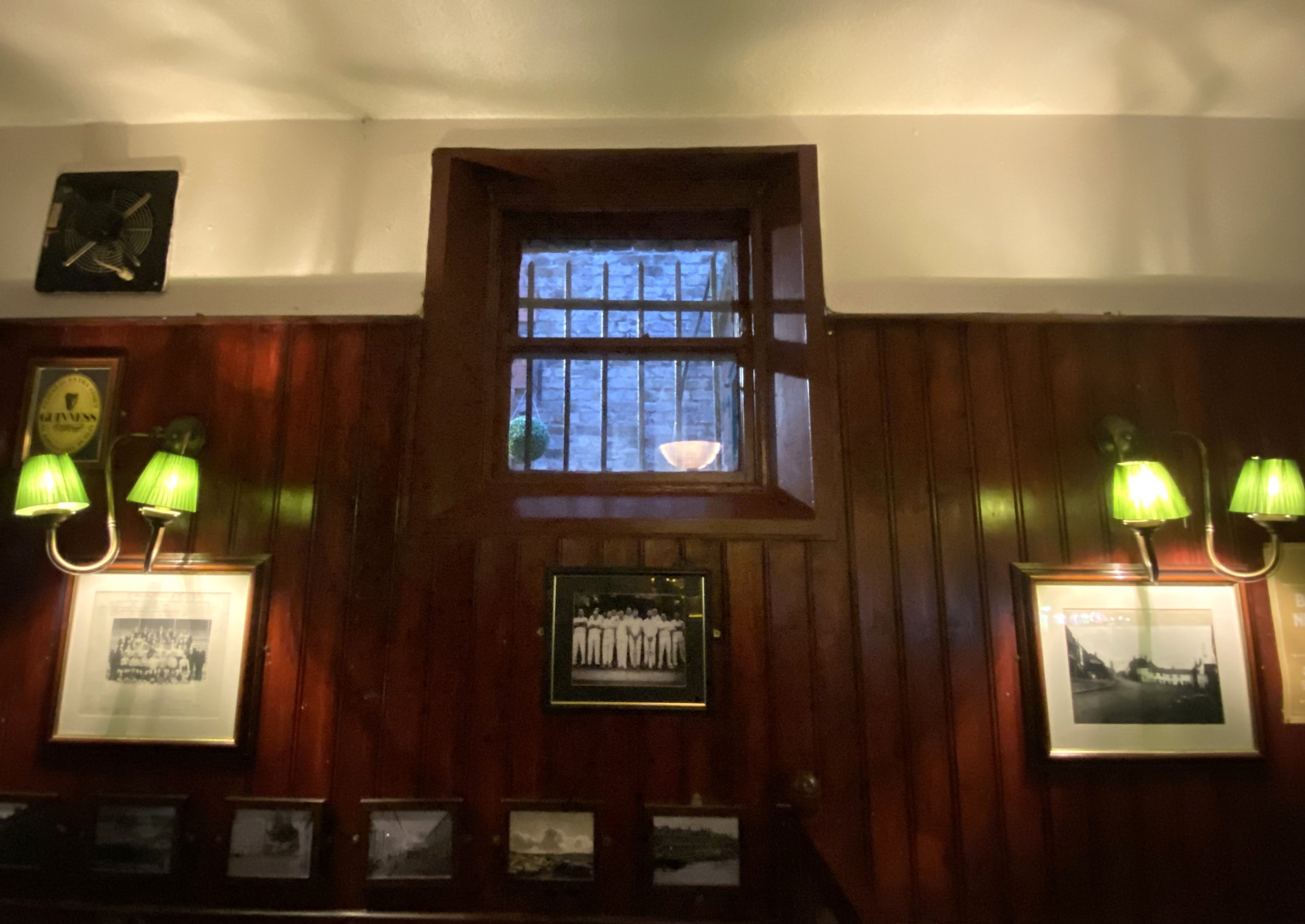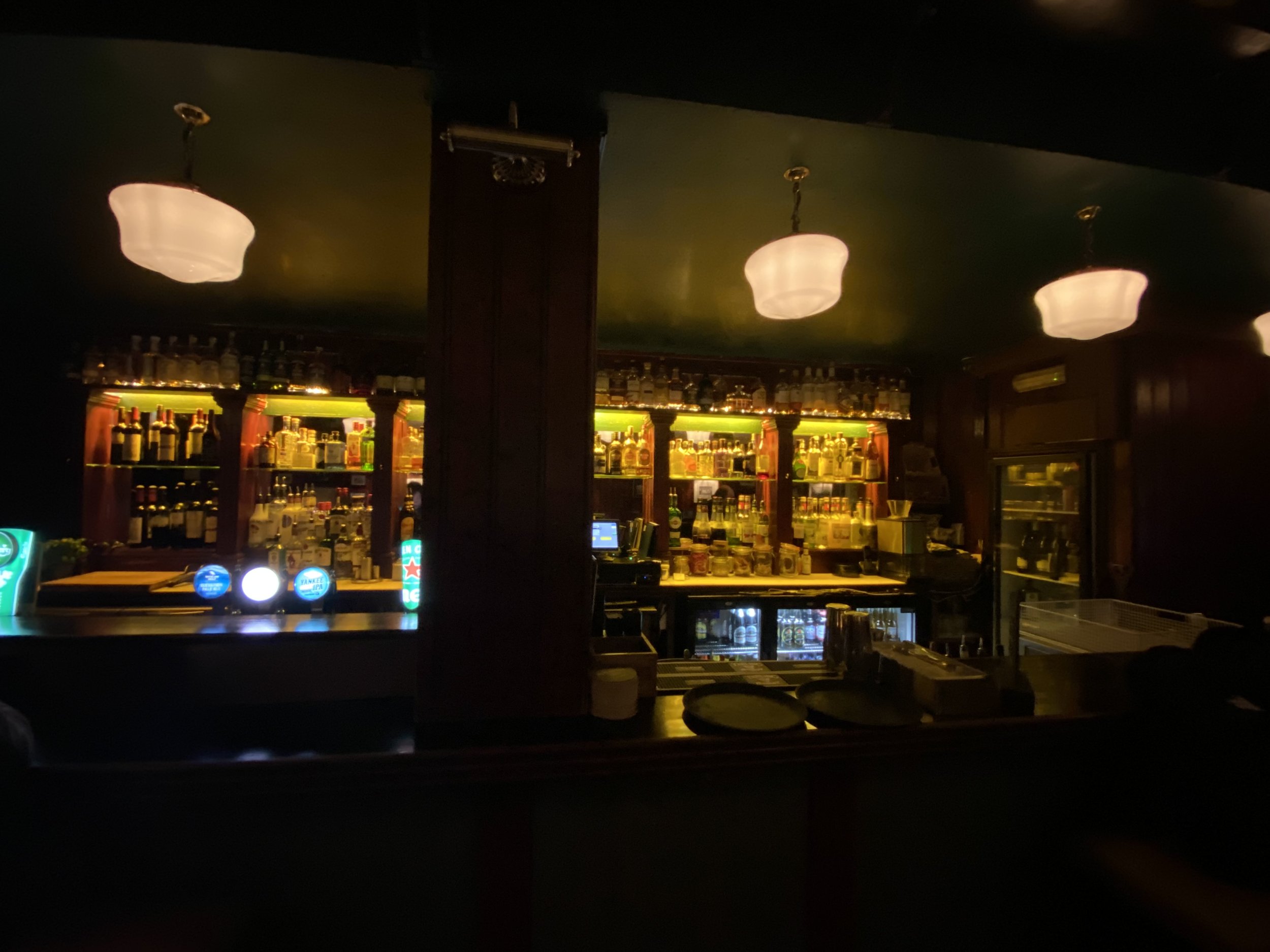401) The Villager of Main Street, Chapelizod, D20
Outside is idyllic in the summertime as one sits propped on a barrel beneath the overspreading branches rippling with their foliage, eyeing the thieving jackdaws and the occasional horse incongruously parked outside the Spar. The most preferable way to get to The Villager is via the Phoenix Park, then slip through the famous Twirly Gate onto Park Lane (as Sam has said, the ‘twirly gate’ is a pearl of a pun for it suggests that the Park is only a paradise after all). One will then saunter past a curious old telephone booth which houses a creepy manikin (they do things differently in Chapelizod) before finally reaching the pub.
We arrived after the New Year festivities had run their course to find ourselves the only villagers in the venue. Five euros and sixty cents for a Guinness. Andy was offered a re-pour of his own pint, since it proved to be the very first pint poured of the year 2023, the place having been shut for a fortnight. He declined this offer of a re-pour - much to his detriment, the first pint proving foul on account of lack of flow. In time, as the flow resumed and the place filled up, the quality improved exponentially.
Once inside, we found a traditional wooden affair with library green lamplight - very palatable to the journeying pintman. Period photographs on the wall are aplenty, of Ye Olde Chapelizod of bygone days a shade closer to Le Fanu’s [1] time. One particular framed poster was a darlin’ jewel and a gem of a thing juxtaposing the Loyalists’ ‘God save the Queen’ with the Irish Volunteers’ ‘God save Ireland.’ That was done, as the fella says, to a purpose.
A very chatty barman was a font of info relating to the pub and talked to us also about the nearby bars of Ballyfermot, and gave us pointers on which ones to try and which to avoid - his colleague joined in, memorably quipping, of one such Ballyfermot joint: ‘There’s more flies than customers’ (a zinger and a keeper, that one!). A brief discussion regarding David Saunder’s case of phagophobia in The Blue Light was jocular. Cocktails are served upstairs for private parties.
Trad sessions take place on Wednesdays, one of the musicians apparently being a former booze-hound who found God, gave up the bottle and took to the collar and cloth. The pub has very specific opening hours - strictly from Wednesday to Sunday, and only from 4pm onwards - eminently respectable and not a place for an early start. For a long time this place was something of a ‘Holy Grail’ for us (akin to the Old Royal Oak), on account of these very specific opening hours which was the occasion for our recurring failure to ever find a decent time to visit it, an omission now happily remedied as of January 2023.
The toilets proved weirdly cold and freezing, with one’s befogged breath puffing and huffing and as visible as dry ice - akin to a demonically possessed Regan MacNeil’s frosty bedroom, and far colder than any weather elsewhere prevailing, whether within the bar or without. What’s that about? These cold cubicles proved a talking point and were deeply Lefanunian indeed. At a later stage the friendly barmen began multitasking making pizzas with an array of fresh toppings, not like the pre-frozen Dr. Oetker shite served in other establishments. Impressive very! We could have happily stayed the day and indeed the whole night drinking and making merry were it not for the call of the Mullingar House just up the Village.
FOOTNOTE:
[1] At just a stone’s throw from The Villager stands the famous house (in much need of repair and looking more gaunt and haunted than ever) which featured in Sheridan Le Fanu’s famous novel The House by the Churchyard (1863). We recommend visiting this site before hitting the pub. One can curl around the house up Church Lane to see the said church and yard and the back of the haunted house which was also Le Fanu’s childhood home built c.1730.
One also thinks to Joyce and Finnegans Wake which quotes, and alludes to, The House by the Churchyard multiple times. As James S. Atherton has it in Books at the Wake, A Study of Literary Allusions in James Joyce's FINNEGANS WAKE: 'Tell me, tell me, tell me, elm!' (216.3) wrote Joyce, and later described the church and stone and tree at Chapelizod. 'Yon creepered tower of a church of Ereland ... with our king's house of stone ... the loftleaved elm Lefanunian above-mansioned, each, every, all is for the retrospectioner' (264.30).
Also, in the Wake Joyce refers directly to the spot in the Phoenix Park where, in The House by the Churchyard, ‘a man named Sturk is stunned and left as dead by Charles Archer, alias Dangerfield, the villain of the book. Sturk is 'resurrected' by an operation performed by Black Dillon and, though he dies later, is able to name his murderer. This 'Crime in the Park' is one example of the Fall and Resurrection, or Redemption, of Man.’
The House by the Churchyard, 34 Main Street, Chapelizod, Dublin 20
DISCLAIMER: The contents of this blog represent personal opinions and perspectives only. Read more.

